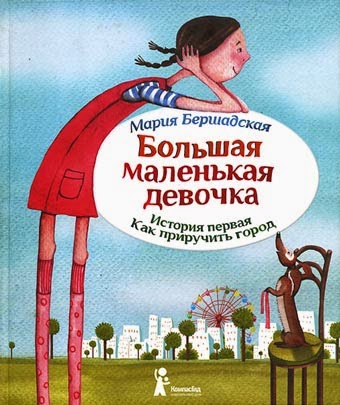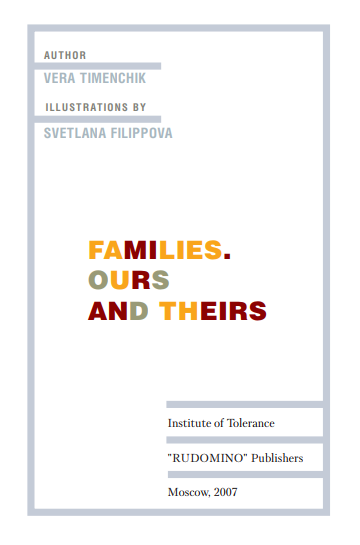Written by Olga Bukhina
Когда я буду бабушкой
Годов через десяточек
Причудницей, забавницей,
Вихрь с головы до пяточек!
М. Цветаева
Испокон веков в детской литературе бабушки занимали важное место, они рассказывали сказки, пели колыбельные, сидели с маленькими внуками и утешали их в разных мелких горестях.
Говоря об иностранных бабушках, сразу вспоминаешь чудную бабушку из книжки «Папа, мама, восемь детей и грузовик» Анне-Катерине Вестли (сама Вестли получила почетное прозвище «бабушки всех норвежцев). В последние пару лет появилось сразу несколько переводных книжек про бабушек, ставших весьма популярными у российского читателя: «Бабушка! – кричит Фридер» Гудрун Мебс, «Бабушка на яблоне» Миры Лобе, «Вафельное сердце» Марии Парр. Это совсем не тихие и смиренные бабушки, а бабушки-авантюристки, каких отечественная детская литература знает немного. Но все же знает, и тут же, конечно, приходят в голову незабываемая Ба в «Манюне» Нарине Абгарян и еще более необычная бабушка Шура в «Где нет зимы» Дины Сабитовой.
Две книги Юлии Кузнецовой – «Помощница ангела» и «Дом П» (КомпасГид, 2014) – про бабушек, своих и названных. О «Помощнице ангела» я уже писала, но там бабушка все же играет вспомогательную роль, а вот в «Доме П» бабушка ни много ни мало – главный герой. Она и впрямь геройская бабушка, да еще с явными авантюрными наклонностями.
Меняются времена – меняются семьи. Когда-то бабушки были обязательной частью семьи – кто еще будет сидеть с детьми, если не бабушка. Это была отличительная черта советской семьи – бабушка, горой стоящая за внуков, стирающая, убирающая, готовящая на всю семью, все делающая, чтобы только мама, как и всякая советская женщина, могла работать. Теперь же все иначе, Теперь папа-финансовый директор готов отправить бабушку «на покой» в дом престарелых, который деликатно именуется «санаторием».
Это слово «престарелый» не хочется выговаривать полностью, вот оно и сокращено до первой буквы. Сразу вспоминается один герой из сказки Вениамина Каверина «Легкие шаги». Чудный был человек, но только о пенсии с ним нельзя было заговаривать, а если уж очень захочется, поскорее надо сказать какое-нибудь другое слово на эту запретную букву.
Престарелый – действительно противное слово, и бабушка Женя его просто ненавидит. Она довольно-таки необычная бабушка, котлеты она, конечно, жарит и борщ варит, но по вечерам она, вместо того, чтобы смотреть сериалы, боксирует с грушей, о чем никто, кроме младшей внучки, естественно, не догадывается.
Вот от этой бабушки и хотят избавиться – с самыми лучшими, между прочим, намерениями. Только для бабушки ничегонеделание, желанный отдых – хуже смерти. Одно дело дома – приготовить, постирать, рогалики испечь, унитаз починить, с внучкой поболтать, с соседкой посудачить – каждая минута при деле.
Но ее сын так боится старости, что превращает нашу еще полную сил бабушку в совершеннейшую старушку. И вообще ему кажется, что бабушка всех ужасно избаловала. Он за всеми своими жизненными сложностями – ответственный человек, финансовый директор – забывает, что она его любимая мама.
Теперь бабушка наводит шороху и в санатории, все ей не сидится и не лежится. В доме П даже боксерской груши нет, остается только тренироваться на подушке. Вот бабушка и переворачивает этот санаторий вверх дном.
Все кончается хорошо, бабушка возвращается к любимым внучкам, но дом престарелых – это дом престарелых, сколько его не называй санаторием, хотя некоторых улучшений добиться все-таки удалось – благодаря именно этой бабушке. Так что бабушки не только хранят мир, но и переделывают.
 Замечательные рисунки Александры Ивойловой очень украшают эти тоненькие томики и помогают себе представить Женю не монстром каким-нибудь, а именно большой маленькой девочкой. А детям Мария Бершадская рассказывает о своих книжках вместе с длиннорукой и длинноногой куклой Женей.
Замечательные рисунки Александры Ивойловой очень украшают эти тоненькие томики и помогают себе представить Женю не монстром каким-нибудь, а именно большой маленькой девочкой. А детям Мария Бершадская рассказывает о своих книжках вместе с длиннорукой и длинноногой куклой Женей.

 Vera Timenchik’s book, Семья у нас и у других (2006) conveys liberal sensibilities and openly discusses questions that until recently were never raised in Russian schools: xenophobia, school bullying, war in the Caucasus, ethnic intolerance, divorce, homosexual marriage, and marital age. Timenchik centers the book’s plot on two 12-year old friends: Kirill is a native Russian born in Moscow; Daut is a recent immigrant from Abkhazia, an area in the Caucasus. Kirill’s family is small and liberal; Daut’s family is, on the contrary, large and patriarchal. Yet, despite their differences, the Kirill and Daut become friends and learn to accept each other’s differences.
Vera Timenchik’s book, Семья у нас и у других (2006) conveys liberal sensibilities and openly discusses questions that until recently were never raised in Russian schools: xenophobia, school bullying, war in the Caucasus, ethnic intolerance, divorce, homosexual marriage, and marital age. Timenchik centers the book’s plot on two 12-year old friends: Kirill is a native Russian born in Moscow; Daut is a recent immigrant from Abkhazia, an area in the Caucasus. Kirill’s family is small and liberal; Daut’s family is, on the contrary, large and patriarchal. Yet, despite their differences, the Kirill and Daut become friends and learn to accept each other’s differences.